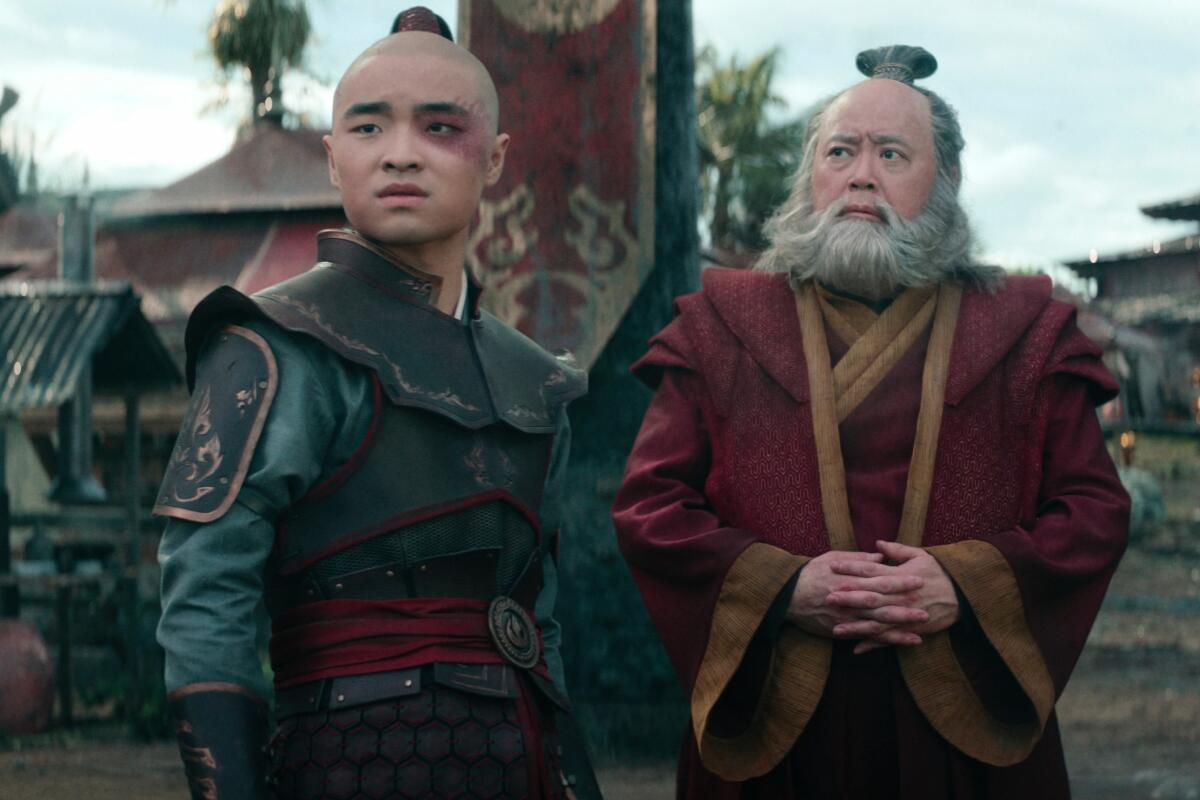While I wouldn’t call myself a die-hard Avatar fan, the original animated series definitely drew me in. The writing was phenomenal, even before I knew how to analyze storytelling. It just gripped me, probably because of its depth and pacing. That’s good storytelling, right? Keeping you on the edge of your seat.
So, yeah, I loved the original series. A lot.
That love, of course, comes with attachment to the format. It’s why people have high expectations for adaptations. But with this Netflix series, I knew it wouldn’t be a carbon copy. No disappointment here, unlike the movie (casting issues aside, that was just…troubled from the start). This is different. There will be changes, missed details – it’s a TV series, with budgets, time constraints, the whole shebang.
So, I went in with that mindset: this isn’t the animated series. And that’s freeing! It lets me appreciate the differences.
Besides the cool live-action take on bending and the world, I found myself getting excited about the potential story tweaks. The writers have their own hand to play, and artistic liberties can be a good thing. Unlike the movie, of course (still not over that).
Here’s where the changes worked: Aang being a bit more serious, the humor shift reflecting real-life dynamics (cartoons can get away with wild exaggerations, but live-action? Think Kung-Fu Hustle – too much goofiness can ruin the tone). I get it. Live-action humor is a thing. Though sometimes it feels forced, like they’re trying a bit too hard to capture the animated characters. Appreciate the effort, but it might come at the expense of feeling natural. Maybe it’s because I already have the animated versions in my head. I never imagined them live-action. So, a double-edged sword: good because I have no expectations, bad because part of me (and probably a lot of fans) is attached to the animation.
Overall Vibe Check (No Spoilers!)
I’m not here to nitpick. I try to enjoy art as a whole, analyze it later if needed. But when elements stand out too much, it’s either intentional or the whole thing isn’t clicking.
This series clicks. The changes seem deliberate, designed to make you go “Oh, cool change!” or “Huh, that’s interesting!” And that’s the strength of the Netflix series. Why fans should give it a shot, and newcomers too.
Zuko, Iroh, and Bending the Franchise
Without spoiling anything, Zuko and Iroh’s storyline takes a significant detour. They’ve added depth to Zuko’s relationship with his crew since his banishment, and I dig it. It’s new, but it works. Iroh’s a bit more subdued, but they’ve also deepened his character, especially with the crew. These changes complement the original vibe. It shows the writers understand the source material and know how to, well, bend it (pun intended!).
That’s probably my final point. As far as I’ve seen, the Netflix series is an imperfect masterclass in “franchise-bending” – intriguing and valuable for both fans and newcomers. Definitely worth a watch.
Full disclosure: I wrote this article with Gemini, Google’s AI chatbot. I rambled to it and asked it to make sense of that rambling — to organize my thoughts better, and edit it the best way it can. I have a day job, I want to do other things, but I still want to blog. So I use AI to make that possible for me. I would go through the generated article a few times over. I would go back-and-forth with Gemini to at least make sure it still had my voice and the stuff that I actually wanted to say in my original rambling. It’s great help, but please don’t do this in your school essays or work (if you aren’t allowed to do so, obviously). This disclosure notice, though? No AI here. And you probably felt that because it sucks.
